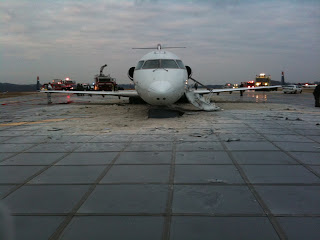I think there's a disconnect here in how this discussion is being formulated. I think you believe that the PNF will either call "Engine failure, abort" or call "V1." I see this going more like this: The engine grenades prior to V1, and before the PNF can say anything, the PF is already stomping on the brakes and pulling the power back. If the PNF were to call V1 at V1 minus 5 in an aircraft where that is not the designated procedure, then you're jumping the gun.
I'm not sure where you feel there's a disconnect. The following assumes an engine failure at Vef:
For certification and operational performance planning, V1 is the
end of the decision window, and the maximum speed at which the brakes must have already been applied. Just to nip this whole thing in the bud: I don't care if you call "V1" at V1, 5 knots before, or 50 knots before. It doesn't matter as long as the first action to stop is taken at or before V1.
The Feds have built in two buffers:
The first buffer is the time between Vef (engine failure speed), and V1. In the worst case scenario for a reject (engine failure at Vef), you have a small window of single-engine acceleration (1 second per Boeing manuals) in which to make a decision and apply braking at/before reaching V1. Calling V1-5 does indeed guarantee performance, as accelerate-stop/accelerate-go distances are predicated on an engine failure before V1 (at Vef).
The second buffer is a distance added to the
end of the deceleration phase, equal to 2 seconds of travel at V1. Per the AC
SteveC posted, that 2 seconds is built in as a buffer for bringing the thrust levers to idle and extending the speedbrakes (second and third actions required during an RTO). This is not a buffer designed to allow the PIC to make a decision as V1 is reached; this buffer has a specific purpose, and the reject decision must have already been made.
Some manuals say that a call should be made at V1. That's fine. As I've already said however, the decision must have already been made prior to that call, and speed awareness is paramount. Contrary to popular belief, there is not a built-in buffer for pilot hesitation at V1.
As always, measure with a micrometer, mark with a crayon, cut with a chainsaw.



